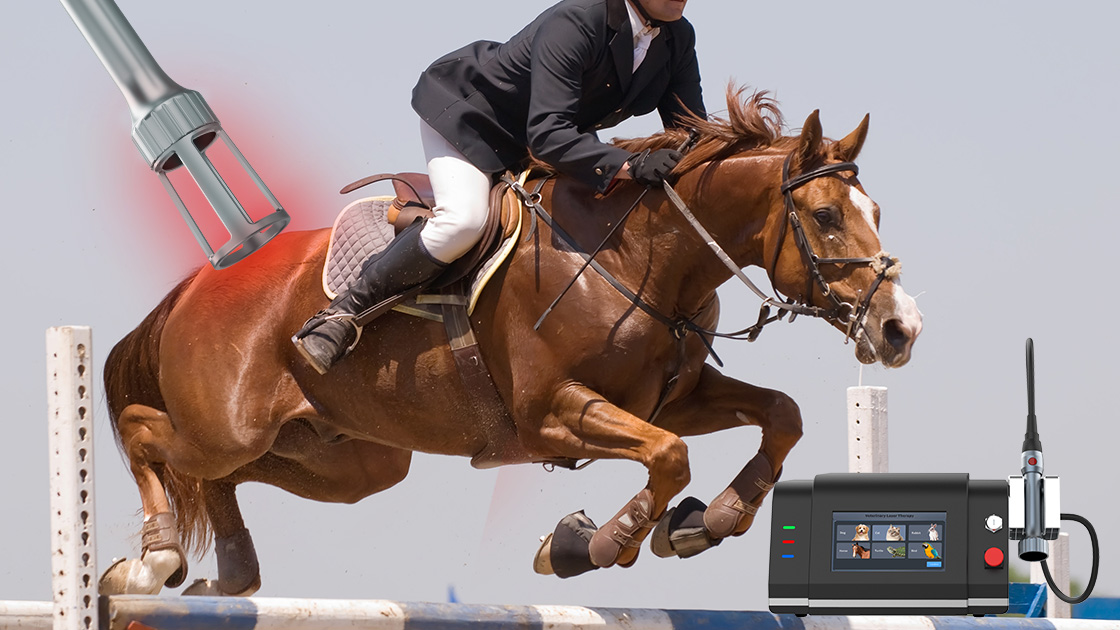Page Contents
What Is Laser Therapy for Horses?
Lasers, also known as photobiomodulation, have firmly established themselves as indispensable therapeutic tools in both human and veterinary medicine. The term “laser” originates from the acronym “Light Amplification by Stimulated Emission of Radiation.” Laser light possesses remarkable focus and is emitted at a specific wavelength and frequency to achieve the most effective penetration and optimal biological impact on targeted tissues. Through cellular stimulation, the laser promotes an increase in ATP (adenosine triphosphate) levels – the primary energy source for all cellular functions. This heightened stimulation leads to improved tissue repair and cellular regeneration, resulting in enhanced circulation, accelerated healing, and alleviation of pain. Laser Therapy for horses is a non-invasive treatment that accelerates healing, reduces inflammation, and provides pain relief. It enhances equine well-being and supports optimal performance in athletic horses.
Types of Lasers Utilized for Equine Treatment
Lasers are classified into various classes based on their potential to harm the human eye, rather than their effects on other tissues.
Class 1 lasers pose no risk of eye damage.
Class 2 lasers may cause eye damage only after prolonged, direct exposure.
Class 3 lasers emit energy ranging from 1 to 500 milliwatts (mW) and can cause eye damage under specific circumstances.
Class 4 lasers, with higher energy emissions at 500 mW and above, can lead to significant eye and tissue damage if not used correctly.
In equine therapy, the most commonly used types of lasers are Class 1 and 3, known as cold or low-level lasers, and Class 4, referred to as high-power or regenerative lasers.
Cold laser therapy has demonstrated its efficacy in expediting wound healing and has become a standard treatment for tendon and ligament injuries. On the other hand, regenerative lasers possess greater power and emit light at higher wavelengths, making them potentially hazardous if mishandled. Due to this, the administration of Class 4 lasers is restricted to veterinarians, who must adhere to safety protocols to safeguard the eyes and skin from potential burns.
Exploring Laser Wavelength and Frequency Impact
The wavelength and frequency of laser light pulses play a crucial role in influencing tissue response. Consider, for instance, a wavelength of 900 nanometers (nm), which proves highly effective in penetrating the skin to treat conditions like tendon injuries. Conversely, a wavelength of 470 nm exhibits minimal skin penetration and best suits the treatment of superficial wounds.
Regarding frequency, a laser operating at 2000 mHz effectively relieves pain, but it may lead to slower tissue healing compared to a 250 mHz frequency. These fundamental factors guide your veterinarian in devising a laser treatment protocol tailored to address your horse’s specific injury.
Class IV Laser Benefits for Horses
Accelerates wound healing
Reduces inflammation and pain
Improves circulation
Treats soft tissue injuries (tendon, ligament, muscle)
Non-invasive and non-toxic
No downtime, immediate recovery
Complements other treatments
Enhances joint mobility
Improves overall performance in athletic horses.
The Best Class 4 Laser for Horses
The Smart Laser Therapy Machine for Horses utilizes advanced laser technology to deliver targeted and precise treatment. The therapy accelerates healing, reduces inflammation, and provides pain relief within a very short time. With its non-invasive nature, horses experience minimal discomfort and can resume normal activities immediately. Smart Laser Therapy is a safe and effective option for addressing various conditions, including soft tissue injuries, joint problems, and wounds. Its intelligent design allows for customized treatment protocols, enhancing overall effectiveness and optimizing outcomes for equine health and performance. Visit our website and join the future of horse care today!
